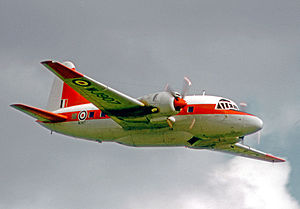
The Vickers Wellington was a British twin-engined, long-range medium bomber. It was designed during the mid-1930s at Brooklands in Weybridge, Surrey. Led by Vickers-Armstrongs' chief designer Rex Pierson; a key feature of the aircraft is its geodetic airframe fuselage structure, which was principally designed by Barnes Wallis. Development had been started in response to Air Ministry Specification B.9/32, issued in the middle of 1932, for a bomber for the Royal Air Force.

The Sopwith Camel is a British First World War-era single-seat biplane fighter aircraft that was introduced on the Western Front in 1917. It was developed by the Sopwith Aviation Company as a successor to the Sopwith Pup and became one of the best known fighter aircraft of the Great War.

The Vickers Vimy was a British heavy bomber aircraft developed and manufactured by Vickers Limited. Developed during the latter stages of the First World War to equip the Royal Flying Corps (RFC), the Vimy was designed by Rex Pierson, Vickers' chief designer.

The Avro Type 694 Lincoln is a British four-engined heavy bomber, which first flew on 9 June 1944. Developed from the Avro Lancaster, the first Lincoln variants were initially known as the Lancaster IV and V; these were renamed Lincoln I and II. It was the last piston-engined bomber operated by the Royal Air Force (RAF).

The Avro Anson is a British twin-engine, multi-role aircraft built by the aircraft manufacturer Avro. Large numbers of the type served in a variety of roles for the Royal Air Force (RAF), Fleet Air Arm (FAA), Royal Canadian Air Force (RCAF), Royal Australian Air Force and numerous other air forces before, during, and after the Second World War.

The Airspeed AS.10 Oxford is a twin-engine monoplane aircraft developed and manufactured by Airspeed. It saw widespread use for training British Commonwealth aircrews in navigation, radio-operating, bombing and gunnery roles throughout the Second World War.

The Avro 504 was a First World War biplane aircraft made by the Avro aircraft company and under licence by others. Production during the war totalled 8,970 and continued for almost 20 years, making it the most-produced aircraft of any kind that served in any military capacity during the First World War. More than 10,000 were built from 1913 until production ended in 1932.
Royal Air Force Manston or more simply RAF Manston is a former Royal Air Force station located in the north-east of Kent, at grid reference TR334663 on the Isle of Thanet from 1916 until 1996. The site was split between a commercial airport Kent International Airport (KIA), since closed, and a continuing military use by the Defence Fire Training and Development Centre (DFTDC), following on from a long-standing training facility for RAF firefighters at the RAF Manston base. In March 2017, RAF Manston became the HQ for the 3rd Battalion, Princess of Wales Royal Regiment (PWRR).

The Armstrong Whitworth Argosy was a British post-war transport/cargo aircraft; it was the final aircraft to be designed and produced by aviation company Armstrong Whitworth Aircraft. Although given different internal design numbers, the AW.650 civil and AW.660 military models were, for most practical purposes, the same design, while both models also shared the "Argosy" name.

The Vickers VC.1 Viking is a British twin-engine short-range airliner derived from the Vickers Wellington bomber and built by Vickers-Armstrongs Limited at Brooklands near Weybridge in Surrey. After the Second World War, the Viking was an important airliner with British airlines, pending the development of turboprop aircraft like the Viscount. An experimental airframe was fitted with Rolls-Royce Nene turbojets and first flown in 1948 as the world's first pure jet transport aircraft. Military developments were the Vickers Valetta and the Vickers Varsity.

Royal Air Force Finningley or RAF Finningley was a Royal Flying Corps and Royal Air Force station at Finningley, in the Metropolitan Borough of Doncaster, South Yorkshire, England. The station straddled the historic county boundaries of both Nottinghamshire and the West Riding of Yorkshire.

RAF Andover is a former Royal Flying Corps and Royal Air Force station in England, 2 miles (3.2 km) west of Andover, Hampshire. As well as RFC and RAF units, units of the Aviation Section, U.S. Signal Corps, Royal Canadian Air Force, United States Army Air Forces, and the Air Transport Auxiliary were also stationed at the airfield.

The Bristol Fairchild Bolingbroke is a maritime patrol aircraft and trainer used by the Royal Canadian Air Force during the Second World War. Produced by Fairchild-Canada, it was a license-built version of the Bristol Blenheim Mk IV bomber.
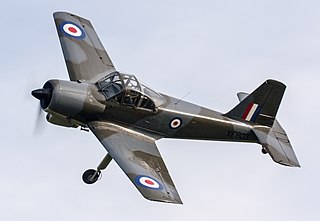
The Percival P.56 Provost is a basic trainer aircraft that was designed and manufactured by British aviation company Percival.
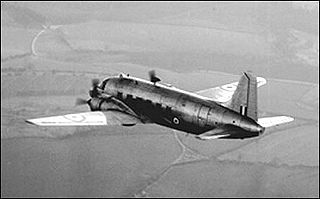
The Vickers Valetta is a twin-engine military transport aircraft developed and produced by the British manufacturing company Vickers-Armstrongs Ltd. Developed from the Vickers VC.1 Viking compact civil airliner, it was an all-metal mid-wing monoplane with a tailwheel undercarriage.
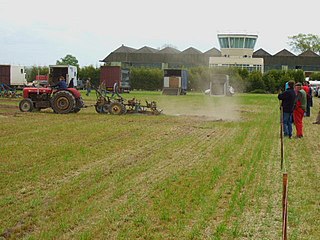
Royal Air Force Lindholme or more simply RAF Lindholme is a former Royal Air Force station in South Yorkshire, England. It was located 3.9 miles (6.3 km) south of Thorne and 6.9 miles (11.1 km) north east of Doncaster and was initially called RAF Hatfield Woodhouse.

The Armstrong Whitworth Atlas was a British single-engine biplane designed and built by Armstrong Whitworth Aircraft. It served as an army co-operation aircraft for the Royal Air Force (RAF) in the 1920s and 1930s. It was the first purpose-designed aircraft of the army co-operation type to serve with the RAF.
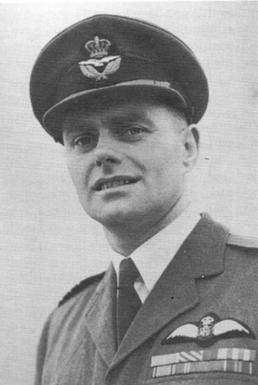
Group Captain Kenneth Gilbert Hubbard was the pilot of an RAF Vickers Valiant bomber which dropped Britain's first live thermonuclear weapon (H-Bomb) in Operation Grapple in the Central Pacific Ocean in May 1957.
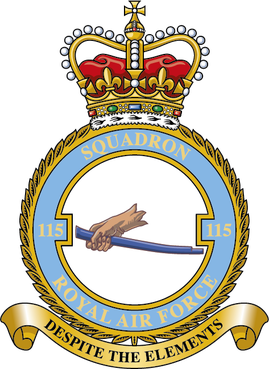
Number 115 Squadron is a Royal Air Force squadron operating the Grob Tutor T1, training QFIs for the RAF's Elementary Flying Training (EFT) squadrons and the University Air Squadrons, as well as undertaking evaluation and standardisation duties.
The RAF College of Air Warfare is a former Royal Air Force flying training unit operational between 1962 and 1974. The unit traces its history back to 1942 as the Empire Central Flying School.
